Indonesian Gado Gado is a colorful, healthy salad dressed in a spicy peanut sauce with a side of rice cakes or lontong. I have used a medley of tomatoes, carrots, radish, beansprouts, carrots, potatoes, and tofu. In this post, I have included the recipe for the homemade peanut sauce meant for the Gado Gado salad.
Origin of the Indonesian Gado Gado:
‘Gado’ is thought to be derived from the Indonesian verb menggado meaning ‘to consume without rice’. Given that rice is a staple throughout Indonesia and more broadly in South-East Asia, this dish is something of an anomaly. In the context of this recipe, gado-gado implies a potpourri or literally “mix-mix”, without the use of rice. The origin of this dish is lost to history. There are those who claim that it was originally brought by the Chinese or Indian descendants of the Portuguese, who were transported to Indonesia by the Dutch. The other urban legend is that the sauce was made of cashews (brought from South America through the Portuguese) and that it was replaced with the cheaper peanut. No matter the origin, this simple, nutritious salad is both a summer and winter hit, providing protein, fiber, and carbs.
Being a reasonable cook, my husband made this salad using coconut cream and peanut butter while he was a student across four continents. This was the humble beginning of a dish that has made its journey with us, enriched by restaurant visits and various cookbooks. In my home, the Indonesian Gado Gado is a complete meal for us. We enjoy eating it with rice cakes.
Some of the cookbooks had very basic recipes, which contrasted with the rich, creamy, spicy peanut sauce that I have tasted throughout Indonesia and Indonesian restaurants. My husband’s creation was based on his native Malay Peninsula version. I began by tweaking his recipe by substituting fresh coconut milk, instead of heavy coconut cream and freshly roasted, ground peanuts instead of the sugary peanut butter. My own peanut sauce recipe evolved from tweaking the sambal belachan or terasi to making my own sauce.
While living in Singapore twice, I used both opportunities to immerse myself in the rich cuisine of the region. Shopping at grocery stores and wet markets became explorative trips, whether it was talking about recipes with local grocers or getting recipe cards. The peanut sauce recipe was the result of one such a trip. This spicy homemade peanut sauce has a journey of its own, with incremental changes made over the years.
Whether it is my Whole Lobster with Chili-Celery Sauce or Baked Tofu Stuffed With Beansprouts I always try to be authentic as possible. I call out any changes that I have made that deflect from the original recipes or if I make any substitutions based on our dietary preferences. It is my hope that these insights would help you make informed decisions as you try out these dishes.
Sambal Belachan v Sambal Terasi:
Indonesian Gado Gado recipe uses the sambal terasi while Malaysia and Singapore tend to use sambal belachan. A word on the difference between belachan and terasi. Many authors say that they are the same and can be used interchangeably. For the most part, that is correct. Both are based on shrimp, chilis, tamarind, and even tomatoes. Every South-East Asian family, has their own heirloom sambal recipes. From my own experience, I have found that the Indonesian terasi has more of the tangy flavor, while the Malaysian belachan has a headier spice kick.
Tempeh v Tofu:
In this recipe, I have used tofu instead of tempeh. Again, like belachan and terasi, these can be used interchangeably. Both are common in the dish and sometimes, both are served, as a protein source. Both tofu and tempeh are made from soybeans. Tofu is coagulated soy milk made into soft, spongy blocks that tends to absorb the flavors of the dish. Tempeh is made form whole soybeans that have been fermented and compacted into dense cakes and can contain quinoa, brown rice, flax seeds, or spices . Tempeh generally has a nuttier, more pungent aroma than tofu and generally has a higher calorie count. That said, they are both an excellent, protein-rich plant alternative to meats.
You can generally use any Asian vegetable in concocting this medley of a bright salad that is full of fresh ingredients. The traditional approach is to blanch or steam the vegetables, accompanied by hard-boiled eggs, steamed, boiled, or baked potato wedges, baked or fried tofu, or tempeh. I have used boiled potato, boiled eggs, fried tofu, and fresh vegetables. But the real star is the peanut sauce, which gives this salad an unforgettable facelift. I guarantee that you will absolutely love this salad for its earthy, spicy, and sweet flavors!
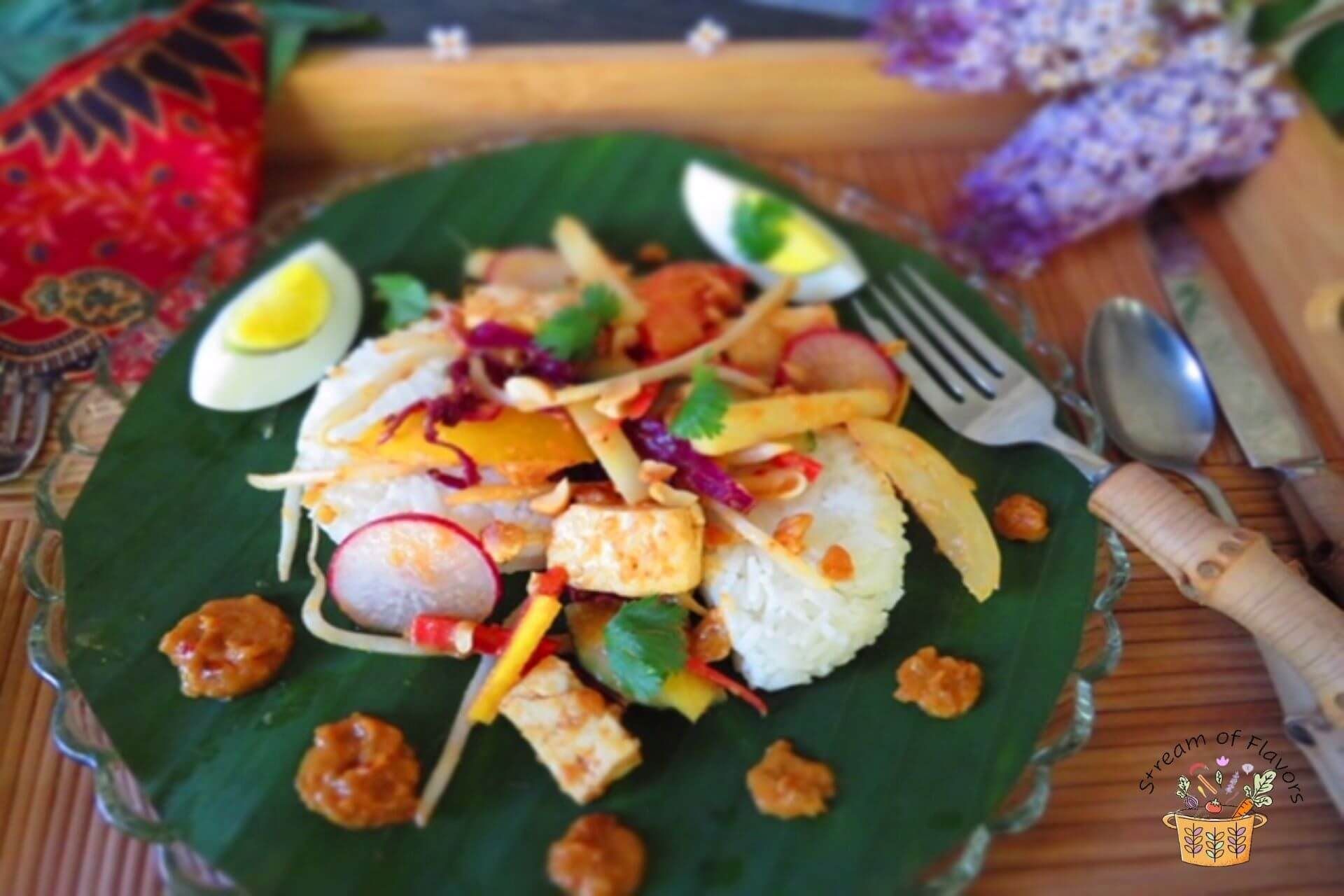
Indonesian Gado Gado with Peanut Sauce
How to make the Indonesian Gado Gado:
1. Prepare the salad:
- Chop or slice all the vegetables, boiled eggs, and fried tofu.
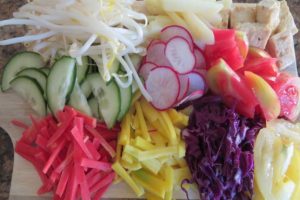
- Toss all the veggies together in a bowl. Sprinkle the lime juice and salt on them.
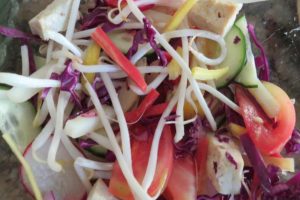
2. Make the spicy peanut sauce:
- Grind the soaked garlic, dried chili, and dried shrimp to a paste with very little water. Sauté the paste in a small pan with the peanut oil for 3 minutes.
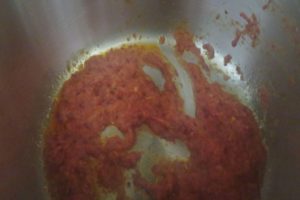
- Add the crushed peanuts, coconut milk, salt, sugar, and cook for 2 minutes.
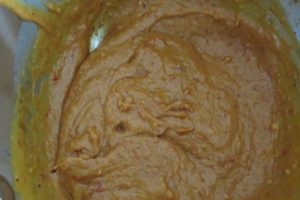
3. Assemble the Indonesian Gado Gado:
- Make small rice cakes out of the cooked jasmine rice.
- Put the mixed veggies on top of the rice cakes. Serve with the peanut sauce on the side or drizzled on top. Garnish with boiled egg slices, cilantro, crushed roasted peanuts, and/or prawn crackers.
1. Can the spicy peanut sauce be made without cooking it?
The quicker version would be to use peanut butter mixed with coconut cream and the rest of the ingredients.
2. Should I add any soy sauce or chili sauce added to the peanut sauce?
Some iterations of this peanut sauce have used soy sauce and/or chili sauce. The more authentic way is to follow the recipe below.
3. What would be a veggie option for the sauce?
Feel free to just exclude the shrimp paste to make it vegetarian.
How to store:
The Indonesian Gado Gado which is made with fresh ingredients must be consumed the same day. The peanut sauce can be refrigerated for a week in a box and frozen for three months which allows for making it ahead of time.
Indonesian Gado Gado
Equipment
- Stovetop, by hand
Ingredients
For the salad:
- 1 cup jasmine rice cooked
- 1 red potato boiled, peeled
- ½ pack firm tofu fried
- 1 cucumber small, Asian
- 1 yellow carrot peeled, julienne
- 1 red carrot peeled, julienne
- 1 red tomato sliced
- 1 yellow tomato sliced
- ½ cup red cabbage shredded
- 4 red radish sliced thin
- 1½ cup bean sprouts
- ¼ lime
- 2 eggs boiled, quartered
- ¼ cup roasted peanuts crushed for garnish
- cilantro chopped, for garnish
- a few crackers optional for garnish
For the peanut sauce:
- 3 cloves garlic minced, soaked
- ½ cup roasted peanuts
- ¾ cup coconut milk
- 3 red chili dried, deseeded, soaked
- 1 tbsp dried shrimp soaked
- 1⅓ tbsp coconut palm sugar
- 1 tbsp peanut oil
- ¾ tsp salt
- ¼ tsp lime
Instructions
How to prepare the ingredients for the salad:
- Chop and slice all the vegetables.
- Mix all the veggies together in a bowl. Sprinkle lime juice on them.
How to make the peanut sauce:
- Grind the soaked garlic, dried chili, and dried shrimp to a paste using very little water. Sauté the paste in a small pan with the peanut oil for 3 minutes.
- Add the crushed peanuts, coconut milk, salt, sugar, and cook for 2 minutes.
How to assemble the Gado Gado salad:
- Make small rice cakes out of the cooked jasmine rice.
- Put the mixed veggies on top of the rice cakes. Serve with the peanut sauce on the side or drizzled on top. Garnish with boiled egg slices, cilantro, crushed roasted peanuts, and/or prawn crackers.
Notes
- Vegetables must be fresh for this salad. Use the vegetables for this salad as soon as you cut them. If that is not possible, then you could leave the veggies in cold water in an airtight container in the refrigerator for a day. Drain the water and use the cut veggies the following day for this salad.
- The recipe for the homemade peanut sauce is for the Gado Gado salad as it varies for other Asian dishes.
Nutrition


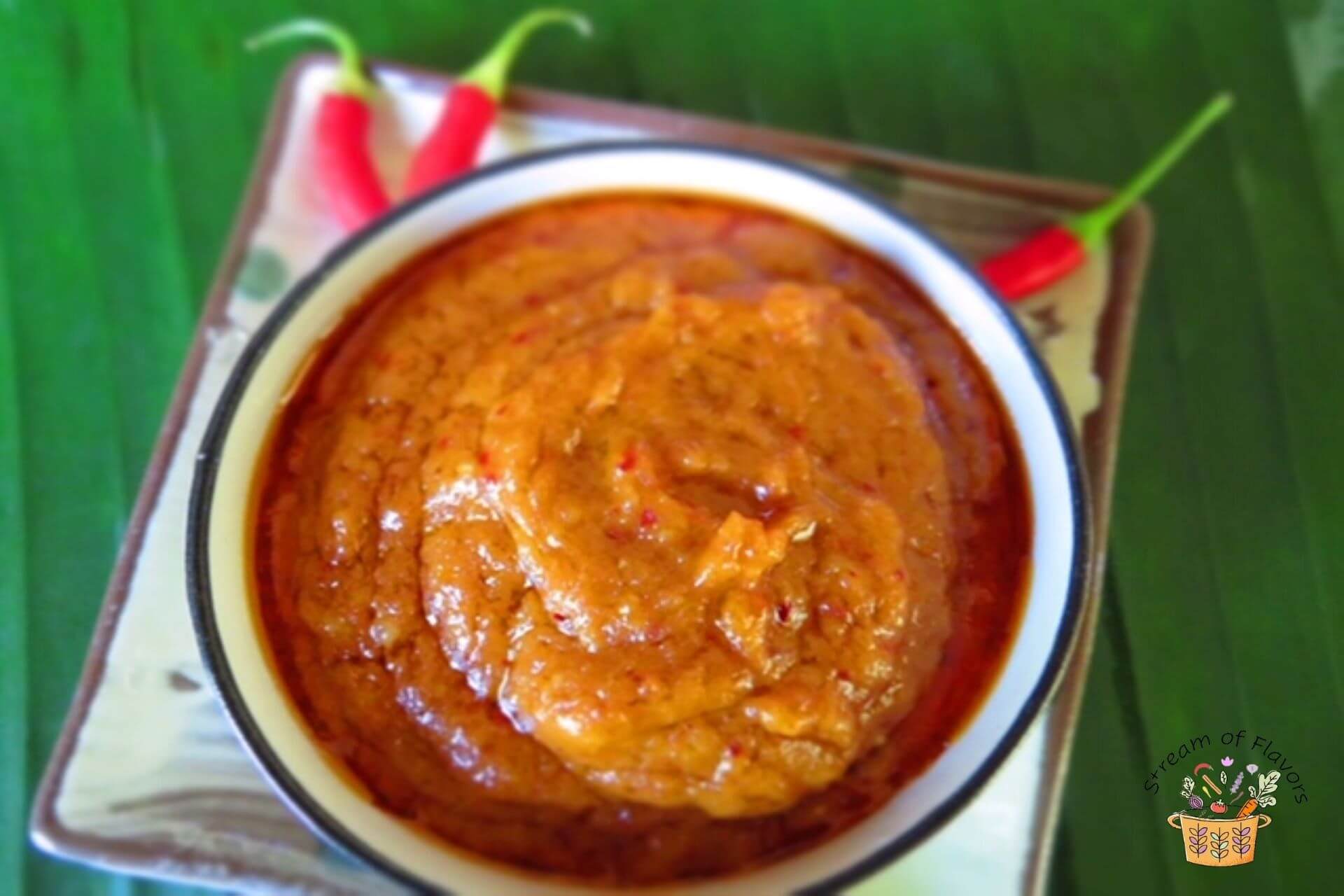
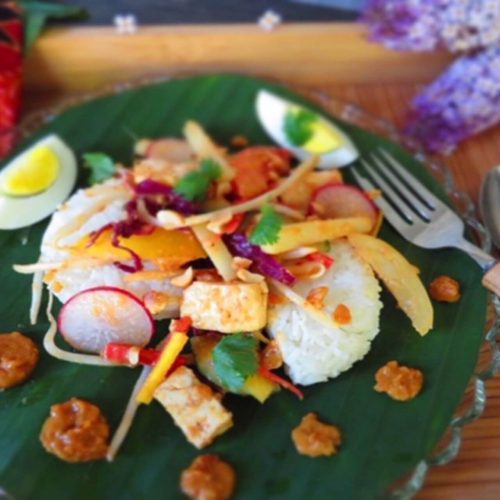




















I tried this and it turned out delicious! I cannot thank you enough for providing such a tasty and easy-to-follow recipe! Great work Kanchan!
Thanks a lot, Ava! I am glad that the recipe was helpful.
this is such a quick and easy salad, thanks!